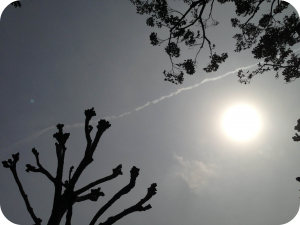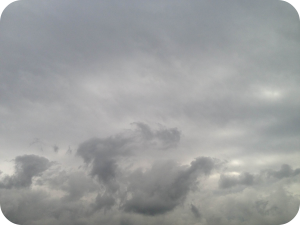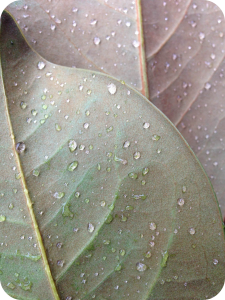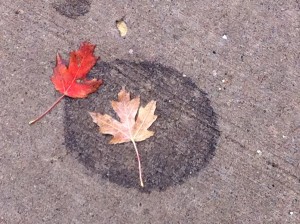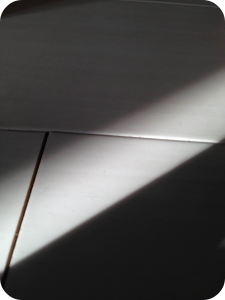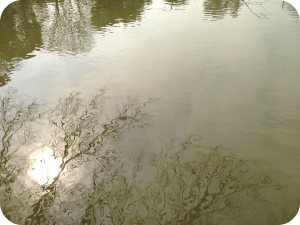Archive for March 2013 | Monthly archive page
“So what’s new with you this week?” I ask the first of the four adult students squeezed into my cramped Tokyo classroom. His chair sits in the corner, squared in by a wedge of intense August sunlight. He mops his brow with a neatly folded handkerchief as he answers slowly, choosing each word with great care.
In turn, I ask each student some version of this question, stalling here and there to tease out the conversation and inwardly dancing with my own indecision. I could easily drop the plan for today’s lesson and just have a chat with them. Part of me leans toward that option out of the urge to avoid discomfort, but my curiosity gets the better of me and I ask them to pull out the packets I’d given them for homework the week before.
Before coming to class today they’ve read two newspaper articles—one chosen by me and one by a fellow student—and answered the corresponding comprehension questions I’d written out for them. They’re all advanced students, dedicated to learning English, and they’re here only because they enjoy it.
Still, like many Japanese students, they can sometimes become reserved to the point of total silence, fearful of saying anything incorrect or untoward. This is especially the case when the topic is controversial, and in the past when we’ve discussed politics or sexuality or Japan’s role in World War II, the room has filled with the kind of painful stillness that a conversation teacher tries to avoid at all costs.
Pairing them up, I direct their attention to the first article, the one I’ve chosen myself, and ask them to discuss it. They pause often to consult the article or my questions, keeping their eyes down, but for the most part their conversations move along at a relatively natural pace. Walking back and forth between them, I listen as unobtrusively as possible and make notes for feedback to give them later.
As we wrap up the first conversation, several of them turn to the next article—the one submitted by a student, and the source of my slightly nervous curiosity. My eyes find the headline upside-down on one student’s desk: Court allows transsexual to change her registered gender. I move them into new pairs and once again invite them into discussion, unsure of what to expect.
Standing back, I keep my eyes on my notes, not wanting to add to any discomfort they might be feeling. But within seconds their conversations start off engaged, animated, dynamic. I look up to see that they’re all leaning in toward one another, making full eye contact. They volunteer their own opinions and willingly, openly ask after those of their partners. Somewhat to my surprise, they all agree that this decision is right, that it treats Japan’s transsexuals with fairness.
Stepping back farther, I lean against the whiteboard, respect and admiration blossoming in my chest. I place my notes on my desk, forgetting them entirely, and just listen.
I peek into the dance studio, scanning the space before daring to enter. Pearl-gray morning light sifts through the two large windows on the opposite end of the room, reflected and expanded by the long wall of mirrors. Someone’s left one of the windows propped open, and a chilly breeze reaches all the way to the door where I stand, still hesitant.
Finally I get up the nerve to walk in and drop my things along the closest wall, with all the other bags and bottles of water. Despite the influx of fresh air there remains a certain pungency here, an atmosphere of movement, of effort, of striving.
People stretch, scattered throughout the space. One person props a balletic leg up against the back wall, another guides herself fluidly through yoga asanas. They all seem so comfortable in this room, so comfortable in their bodies. I sit and stretch too—for something to do, for a place to put my eyes.
The teacher catches our attention and briefly explains that the music will cycle through five rhythms: flowing, staccato, chaos, lyrical, and stillness. Provided we respect one another and the space, we’re free to move as we like, letting the music guide us.
Within seconds, my whole self stands up with a yes.
The music starts, and with it our bodies. I close my eyes and feel into it. The sounds are smooth, water-like. I let my arms drift upward and down again, leading with them. The rest of my body follows, responsive, unresisting, free of thought.
The first shift in music catches me by delightful surprise. Its rhythm is strong and assured; around me people move in sharp bursts, knees lifting, elbows jabbing, chins pointing. We each dance in our own world, and yet it’s clear in how we move through the space that these worlds are touching, unmistakably connected.
When it changes again, the music is carried on a drumbeat so solid that to follow is imperative. Every part of me gives way to a deep and thorough shaking. I have no desire to stop, but don’t think I could even if I wanted to. The beat transports me beyond cognition; there’s simply no room to resist.
The next piece is playful, buoyant. I meet the blue-gray eyes of another dancer and her smile sparks one of my own. Something joyous lifts in my midsection. Here there’s a freedom of movement, a lightheartedness in the wake of intensity.
The last rhythm is quiet, soothing. I lie on my back, drawing my knees to my chest and rolling gently. Looking around, I notice other dancers slowly undulating, and still others curling up within themselves.
Afterward, I smile to myself as I change into my street clothes, then notice that the girl with the blue-gray eyes is just to my left.
“First class today?” she asks.
“Yep,” I say, turning my face toward her.
“Never would’ve known,” she says, smiling in return and moving toward the door. “See ya next week.”
“Drawing’s not hard,” a friend once said to me as I enviously watched a detailed still life take shape under her hand. “You just have to look at what’s actually there instead of what you think is there.”
The truth of that statement slammed into me, hard. At the time—my early high school years—it was a concept I’d never considered. But suddenly it made sense why the figures I drew never really looked like people, why the trees never looked like trees. I was drawing the images I already held in my mind rather than what was actually in front of me.
It turns out that we do this all the time. Our minds fill in the blanks of the world around us, saving themselves time and energy as they do. This is highly adaptive, of course; having to pay full and deep attention to every detail of the world around us is exhausting and time-consuming. The ability of our brains to filter out what is already known—and thus deemed less important—frees up attention so we can focus on other things.
But it can also carry over into a state of dullness, of boredom. When we think we already know what’s there without even looking at it, the world can seem tiresome; every action we take can become tedious. Our natural human curiosity becomes buried under the sense of already knowing, and we lose the enjoyment of exploring our lives and our surroundings with care and interest.
If you hang out with young children, you can watch them investigate their own worlds with fathomless inquisitiveness. Things adults just walk on by without noticing become the source of deep and careful inquiry—not to mention joy. The delight children feel in the discoveries they make is a delight that’s still available to each and every one of us who’s willing to stop, to let go of the idea of what’s already known, and to really look.
Contemplative photography also opens a path toward this. Through the lens of the camera, what we see becomes the focus of our attention in a different way than it may have been had we just stopped to look. We begin to see shapes and lines, colors and textures in ways we hadn’t considered before, and in the moment or two when we’re snapping photos, our eyes and our minds are wholly focused on what’s actually there.
Because attention is the most sincere form of love we can give, what we pay attention to matters. It’s normal and natural that we’re sometimes bound up in thoughts that are unrelated to our surroundings—this is part of being human, of having a mind. But when we can remember to grant the fullness of our kind regard to what’s right there, new possibilities open to us.
What helps you stop and remember to see? How do you show love to the world around you through your attention? I’d love to hear your thoughts and ideas in the comments.
Through her online Seeing Drala course, Julie Einstein invites students to open up to the world around them and notice the beauty and magic that they might ordinarily overlook. Julie was kind enough to answer some questions about contemplative photography, otherwise known as miksang, her own practice, and her teaching.
What is contemplative photography and how does it differ from other ways of photographing the world around us?
Contemplative photography is appreciation of the moment a photograph is taken, the actual process of seeing, tuning into our perceptions and the magic or ‘drala’ that exists in our world. There is no post processing or editing of images. Process…not product…. Yes, there are quite often beautiful images to share with others but this is secondary to the actual moment we made a connection with the world.
How does using the camera as a tool for seeing help us to experience our perceptions differently?
I think that most of us need to use a camera as a reminder to start noticing the world around us. If our camera is with us then we will remember to use it! Obviously all of us are always looking and seeing as we go about our day but are we actually connecting, touching in, opening to the world or are we in our head thinking about what needs to be done, what we should have done, etc.
When we are thinking too much there is a lot that we don’t see. We are somewhat blinded to our surroundings. So the camera is used as a vehicle to help us remember to see. To capture a moment that stopped us – that flash of perception. After a while we don’t need to reach for our camera any longer as we are deeply satisfied with the connection we have made when we notice the magnificent maple tree shadow against the fence, or the bold red color of a woman’s hat or even the morning dew on a car door handle. The most simple and yet profound beauty that often goes unnoticed is now appreciated. This is ordinary magic.
When practicing taking photos in this way, what’s the relationship between the role of intention versus the role of thought?
Unless we are on a particular assignment (shooting color, light, etc) there really isn’t any intention other than slowing down enough to allow the world to present itself to us. It’s there all of the time … just waiting to be noticed. Once something stops us in our tracks, when we have that Flash of Perception, we do our best to form the equivalent of whatever it was that stopped us. We are trying to move away from thinking mind in contemplative photography because thinking gets tricky and thinking gets in the way of seeing clearly. Once we start to think about what to photograph and how we want to photograph we begin to move away from the purity of the moment. We might even begin to ‘add’ things to our photograph – something that we didn’t even see in the first place.
Part of the practice is learning to recognize when we are thinking too much and sometimes that means letting go and moving on. For the most part we don’t use the composition rules that are taught in most photography courses since our goal, if I dare use this word, isn’t to create the ‘perfect’ image. We simply want to share our perceptions with others.
When teaching about shooting images of texture, you make a distinction between our mental understanding of what texture is versus our being able to actually see the texture through the way light and shadow work in the image. For example, in an image of pavement that’s not well-lit, we might understand in our mind that there’s texture there but not be able to see all the bumps and hollows of the asphalt itself. Are there other ways our pre-conceptions or thoughts commonly assert themselves in this practice?
Great question!! Absolutely. We have so many ideas and concepts about the way things should be, the way photographs should look, how to make them look better, what will people like, what do I like, is it pretty or is it ugly, is it interesting or is it boring, is it worth photographing or not, I like the color red more than the color blue. The list goes on and on and on.
More importantly this mental dialogue takes place all the time and interferes with the way we perceive everything that takes place on a daily basis (not just what we see). She’s nice, he isn’t. The smell of coffee reminds me of that time I was in Paris. I hate frozen pizza because I ate it a lot as a kid. We see and experience the world through these filters but the absolute good news is that this can change. We have the ability to reframe how we see and how we experience our world which I find completely fascinating.
A good book to read on this is Letters to Vanessa by Jeremy Hayward. I highly recommend it to anyone who is interested in learning more about perception and how we perceive the world. He makes reference to an Enchanted World and a Dead World. The Enchanted World is the world in which we lived when we were children, clear and free of any filters. Exciting and enchanting. The Dead World is the world that we soak up unconsciously when we were growing up.
You quote John McQuade as saying, “Stop the mind by stopping the eye.” This sentence itself is quite arresting. Could you expand on it for us?
I like your use of the word ‘arresting’….Most of us are arrested by our mind. It’s what our mind does. It thinks. That’s its job. However, we can have moments of clarity. Moments of clear seeing. When we stop our eye, we stop our mind. The thinking stops. A gap occurs. This gap allows us the opportunity to experience something spectacular, something quite magical…we are making a connection, a heart connection with the world. It’s super fast but it’s super fantastic and it happens (or can happen) all the time as long as we are open to it.
What’s a Visual Haiku and what can we learn from them?
Haikus are Japanese poems that commonly reference a season; the tension between the changing seasons. There is usually a jolt of some kind, something that stops our mind. A visual haiku illustrates this tension through a photograph. Examples could be a leaf that has fallen into a puddle after a rain storm, a lost shoe emerging from the backyard after a long winter when the snow is melting, or dried out brown hydrangeas resting on the ground. Autumn is one of my personal favorite times to shoot. The landscape here in the Midwest is painted with golden yellow, red and brown leaves and so many different types of trees. It’s a feast for my eyes and for my soul.
A deep interest of mine is the interconnection between body, mind, spirit and emotions. Do you see contemplative photography as having a role to play in that connection?
Definitely with the mind. The photography practice itself is a nice start. This helps us to connect with the world. We learn how to sync our eye and our mind through assignments and exercises. However, we can go deeper. There are much more deeper teachings that can also allow us to connect with our heart; ultimately syncing eye, mind and heart. So on one level we can connect with our world and appreciate what we see but if we go deeper we have the opportunity to appreciate our lives in a way that maybe we didn’t before. Appreciation of our lives. Of our LIFE. This is powerful and this is possible. Is it spirit? Is it magic? Is it soul? Is it drala? I believe we are integrating all of these and probably much more. Regarding emotions? I can’t really speak for others but from my own personal experience I can say that when I feel connected and in touch, in tune, in communion with others, with nature, with the world, and with the lamp post I feel pretty darn good.
How has your teaching of contemplative photography affected your relationship with it?
Teaching contemplative photography is an honor. I am honored to share what I have been taught with others. I can’t not practice. It’s part of who I am. It’s how I experience the world now. However, teaching can sometimes raise questions about my own personal practice…am I practicing what I am teaching? I always do the assignments I give to students. This helps me to connect with them. It’s as though we are all seeing the same reflection in a water puddle or patch of light across a building. I feel in sync even though I might be on the other side of the world. That’s pretty awesome for me!
Anything else you’d like to add?
I am always amazed and inspired at the questions I get from students. These questions inspire me to learn more, to go deeper, to try harder. I especially love looking at the images that each student takes. Seeing the world through their eyes, seeing what their environment looks like. Seeing how their thinking mind sometimes gets in the way. Noticing how mine does the same thing too.
I think it is important to point out that these teachings are based on the Dharma Art teachings of the late meditation master and artist, Chogyam Trungpa Rinpoche who was the founder of Shambhala International.
Where can we find you online?
You can find me at www.julieeinstein.com.
Info on the class at www.julieeinstein.com/seeing-
Info on Nalanda Miksang International and www.miksang.org
“What’s this, Mama?” My two-year-old daughter kneels and points at the base of a tree, her eyes intent and curious.
It’s an overcast autumn morning soon after a rain. The hollows in the flagstones lining the wide walkway into the park stand pooled with water, and fallen leaves litter the whole area. A few sparrows hop and peck a short distance away, paying us no mind.
I crouch next to her and look more closely. “It’s moss,” I say. “See how it’s nestled in here all snug on the tree?”
“Why?” she asks.
“I’m not sure, actually. I guess it makes a good home for the moss, and maybe it’s good for the tree too,” I say.
She reaches out a finger and touches it, tentatively at first, ready to pull away at any second. Instead she gasps with delight. “It’s soft,” she says. “And wet.”
“Yeah, it is, huh? You can touch it as much as you want if you’re gentle.”
Her three-year-old brother runs up behind us, holding a stick in one hand and several yellow leaves in the other. “What are you guys looking at?” he asks.
I wait for her to answer him but her attention is entirely focused on the moss; she doesn’t even seem to notice he’s there. She sits back on her heels now, studying it.
“See this moss here?” I say, pointing. “We’re just exploring it a bit.”
He crouches beside his sister, the sleeves of their coats touching. I watch them for a moment, their eyes open wide with interest. An unusual quiet settles over the whole area.
He tilts his head to the side and bends low, his face close to the moss. “It’s really bumpy,” he says. “Like grass, but smaller.”
Mimicking him, she tilts and bends to the opposite side. She reaches out her hand again, palm flat this time, and begins to stroke it gently, lovingly, as if it’s a small animal. He does the same, and a shiver of enjoyment runs visibly through his body. They smile at each other and start to laugh, taking turns stroking it and sitting back just to look at it.
“We could dig this up, Mama,” he says, “and take it home with us.”
“We could,” I say, “but see how it lives so closely with the tree? We wouldn’t want to hurt the moss or the tree by trying to dig it up, right?”
He shakes his head in agreement. Then his face brightens. “We can come back and visit it!”
“Sure we can,” I say. “Whenever you want. It might look different each time, too. We could watch for its changes.”
She’s been quiet a long time, ruminating. “I wanna take a picture of it,” she says suddenly.
“Me too! Me too!” he says, jumping up and down.
I take out my phone and we huddle in close around the bright screen, each of them taking dozens of blurry but fond pictures of their newest happy discovery.
I turn away from my empty bedroom, having just given it the final once-over. All the scattered belongings I’d nearly forgotten have been tossed into a spare shopping bag by one of my housemates, and it bulges so that I can scarcely hold the handles together. I glance down and notice a shoe lying across the top; the younger of their two dogs has enthusiastically chewed large holes into its toe.
For reasons I don’t entirely understand, things are not coming to an amicable end in this house where I’ve lived for the past couple of years. My chest aches with the urge to repair the relationship somehow, and with the apprehension that I probably never will.
My now-former housemate stands near the front door, one arm horizontal across her chest, my key dangling from her finger. The false cheerfulness of her demeanor forms a slick veneer over the tension in her body.
The elder of the dogs runs to me, toenails clicking and skittering on the hardwood floor. He has brown patches above his eyes like eyebrows, and they slant with concern. I kneel and bury my nose in the fur at the back of his neck, stroking the tender openness of his throat. His scent has the musty tang of an older dog and, at the same time, is just his very own. Hanging low between his legs, his tail wags cautiously with restrained pleasure. I stand and kiss him between his eyes, still oblique with worry, and gently tug his ears through my hands just the way he likes.
I think of the many nights these two dogs spent in my bed, gradually unfolding their bodies hour by hour until eventually I lay teetering on the edge of the mattress, a forepaw or two grazing my face.
The younger dog bounds toward me then, her tail whipping back and forth as she barrels ahead. Her feet lift and fall in a dance of excitement, and she thrusts her head between my knees—her preferred position for receiving affection. I scratch the spot just above her tail and she wiggles eagerly, fully receptive and brimming with zeal.
Her nose bumps the leashes hanging behind me and her whole hindquarters waggle expectantly. “Not today, sweetheart,” I say, backing up to rub her ears. “Maybe sometime soon.”
I flash a glimpse up at my housemate. She half-smiles but her eyes dart immediately away. My throat tightens and I return my gaze to the dogs.
Outside I climb into the car, eyes welling up, and look over at the friend who’s been waiting for me here.
“You OK?” she asks.
“I’ll be all right, thanks,” I say, turning back for a last look at the house.
As usual, both dogs stand alert on the couch, peering out at me as I leave. In perfect synchronicity, their two heads follow the car as it slowly pulls out into the street, drawing me away one last time.
We’ve all been there.
Every single one of us has had the experience of sitting in front of a project we need or want to be doing with that chest-constrictingly painful feeling of blockage. There’s a tightness, a restriction, an obstruction taking place, resulting in the inability to eke out even the tineest dribble of satisfying work.
And we’ve all been on the other side too—of the spirit-lifting joy that comes with riding a wave of creativity. We might be just going about our business when this feeling arises, but more likely we’re plugging away at our usual work when something seems to lift us from below and carry us along with it. It’s a wonder and a delight, to be sure, and it’s how most of us imagine creative work should ideally look.
But if these are two ends of a spectrum, in between them lies the wide range of experience where we most often fall. We can tilt more toward one end or another at different times in our lives, depending on our circumstances. And, of course, the most powerful and influential of these circumstances is what’s going on in our minds.
During times of resistance to our creative work, we’re often stopped by fear, procrastination or just plain inertia. There are tools to help get beyond these issues, of course, but much of the time we may not even realize we feel blocked. We tell ourselves that we’re busy or we’re tired or we’ll do it when things settle down. But in the meantime weeks or months or even years may pass by without the right time ever coming along.
And when that happens it’s time to delve deeper. What’s at the root of the story? What are the repetitive, mantra-like—possibly even unconscious—thoughts which hold you back from the work you’d most like to do?
Because thoughts are very often the beginning of behavior, a shift in thought can often make a dramatic impact. When your thoughts are in harmony with the greater needs of your whole self, you’re free to respond openly, genuinely, respectfully to the creative urges you feel.
After all, our most meaningful and impactful creative work comes from that place of wholeness. It’s only when we’re able to lean into the dance of wholeness—of the natural integration of our minds, bodies, emotions and spirits—that the work will flow in the way we most yearn for.
The most important aspect of any of this is, as ever, attention. Attention to your thoughts, feelings and urges will help guide you in all that you do, but is absolutely vital when it comes to creative work. What pulls you? What wants to be done, said, sung, painted, danced? In what way are you comfortable letting it move through you? What small thing could you do today that would feel good, fun, revitalizing?
Because the way to cultivate any lasting habit is make it feel good. Where’s the pleasure? Find that and you’re well on your way.
